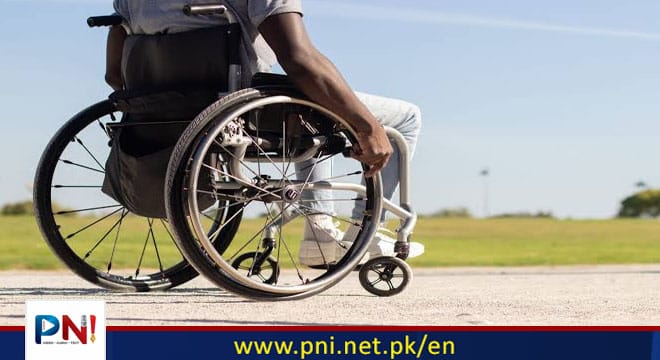ISLAMABAD, May 30 (Online): A Dutch man with paralyzed legs can now stand and walk, thanks to a wireless brain-spine interface that responds to his thoughts by moving his legs.
Gert-Jan Oskam, 40, suffered a spinal cord injury 11 years ago from a bike accident in China that left him unable to walk.
Oskam now has a brain implant that picks up signals of movement that, in a healthy person, would travel down the spinal cord and cause the legs to move. Instead, that implant transmits those signals wirelessly to a second implant located in his lower spine, which then stimulates the muscles of the leg into action, researchers report
This experimental high-tech “digital bridge” between the brain and spine allowed Oskam to pick up a paint brush just the other day and perform a simple low-tech chore around his home in the Netherlands.
“Something needed to be painted and there was nobody to help me, so I had to walk around and to paint,” Oskam said in a media briefing Tuesday. “I did it myself, while I was standing.”
Researchers for years have been trying to restore the ability to walk using nerve stimulators implanted in the spinal cords of patients.
However, those test subjects often walked robotically and were unable to adapt their leg movements to different terrain.
Oskam has benefited from the next step in that research, a means of allowing the brain to control the spinal stimulation and create a more natural stride for patients.
“What we have been able to do here is to reestablish the communication between the brain and the region of the spinal cord that controls leg movement with a digital bridge that captures the thoughts of Gert-Jan and translate these thoughts into stimulation of the spinal cord to reestablish voluntary leg movement,” said senior researcher Gregoire Courtine, a neuroscientist and professor with the École Polytechnique Fédérale de Lausanne, in France.
Oskam says he can now walk 100 to 200 meters (up to about 660 feet) at a time, and can stand without using his hands for two or three minutes.
The device has also improved Oskam’s neurological recovery. He’s been able to walk with crutches even with the implant switched off.
More natural movement
Oskam already had a spinal stimulator implanted in his back, due to his participation in earlier studies. That allowed him to move, but his motions were robotic and stiff.
“It wasn’t completely natural. The stimulation before was controlling me, and now I am controlling stimulation by my thoughts,” Oskam explained.
Researchers developed a passive implant located above the motor center of his brain that could pick up signals that normally would control movement.
Using a special headset and walker, Oskam can take more natural steps as the brain implant picks up movement signals and then transmits them to the spinal stimulator.
“We were able to calibrate the first models within a few minutes, which enabled Gert-Jan to control the flexion of his hips. And after several minutes of training, he was able to walk naturally using the system,” said lead researcher Henri Lorach, a professor with the École Polytechnique Fédérale de Lausanne.
“We were able not only to decode simple movements, but movements of the hip, the knee and ankle joints,” Lorach added. “And with this strategy, we really provided voluntary control of spinal cord stimulation to the participant.”
Because Oskam can control so many parameters of leg movement — and receive feedback as he moves — he can walk on all sorts of different terrain, Courtine said. He can walk up steps, progress over ramps, and stop and start as he pleases.
The brain-spine interface also has appeared to speed Oskam’s recovery. After 40 sessions of neurorehabilitation, his ability to walk has significantly improved — he can move independently around his house, get in and out of a car, or have a drink with friends standing at a bar, the researchers reported.
“Without stimulation now, I can also walk,” Oskam said. “I think that says a lot. I regained enough strength and movement to make steps.”
It’s previously been shown that spinal stimulation can trigger the growth of new nerve connections, Courtine noted.
Follow the PNI Facebook page for the latest news and updates.








